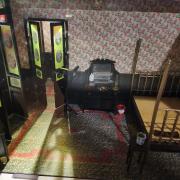
Two weeks back, on the 29th October, a group of excited scientists from the Culham Centre For Fusion Energy had announced that they had formed Plasma, an incredibly important step towards achieving clean energy from Nuclear Fusion using MAST. MAST or (Mega Amp Spherical Tokomak), is a nuclear fusion reactor in the heart of Oxfordshire. MAST took 7 years to build and cost £55 million, a staggering amount of money. However this is no ordinary nuclear facility, this is a facility that aims to eradicate the need for fossil fuels by 2040.
How does MAST work? MAST uses the principles of nuclear fusion to achieve energy. Nuclear fusion, a type of nuclear reaction, involves fusing two smaller nuclei into a larger nuclei, which in turn gives off energy. MAST uses a device called a Tokomak, an engine that was first developed in the 1960’s in Russia
In this machine, Hydrogen gas is heated to astonishingly high temperatures to form Plasma- a charged gas which provides the environment needed for nuclear fusion. In order to control the Plasma so that it can be used, a magnetic coil is placed around the Plasma. Finally this Plasma is heated to temperatures of 300 million degrees celcius: it is at this point that the Hydrogen fuses and large amounts of energy are given off which are then harvested. The people at MAST believe they have created Plasma, a vital step to making clean energy from fusion, with the UK Science Minister stating that: “Powering up the MAST Upgrade device is a landmark moment for this national fusion experiment."
If nuclear fusion can be harnessed, it means that humans would be less dependent on fossil fuels, a step towards achieving a cleaner Earth. Traditional fossil fuels are detrimental for the environment, producing greenhouse gases which cause global warming, habitat destruction and changes in climate cycles. Could this discovery eradicate the need for fossil fuels, resulting in a cleaner Earth? Only time will tell.



























